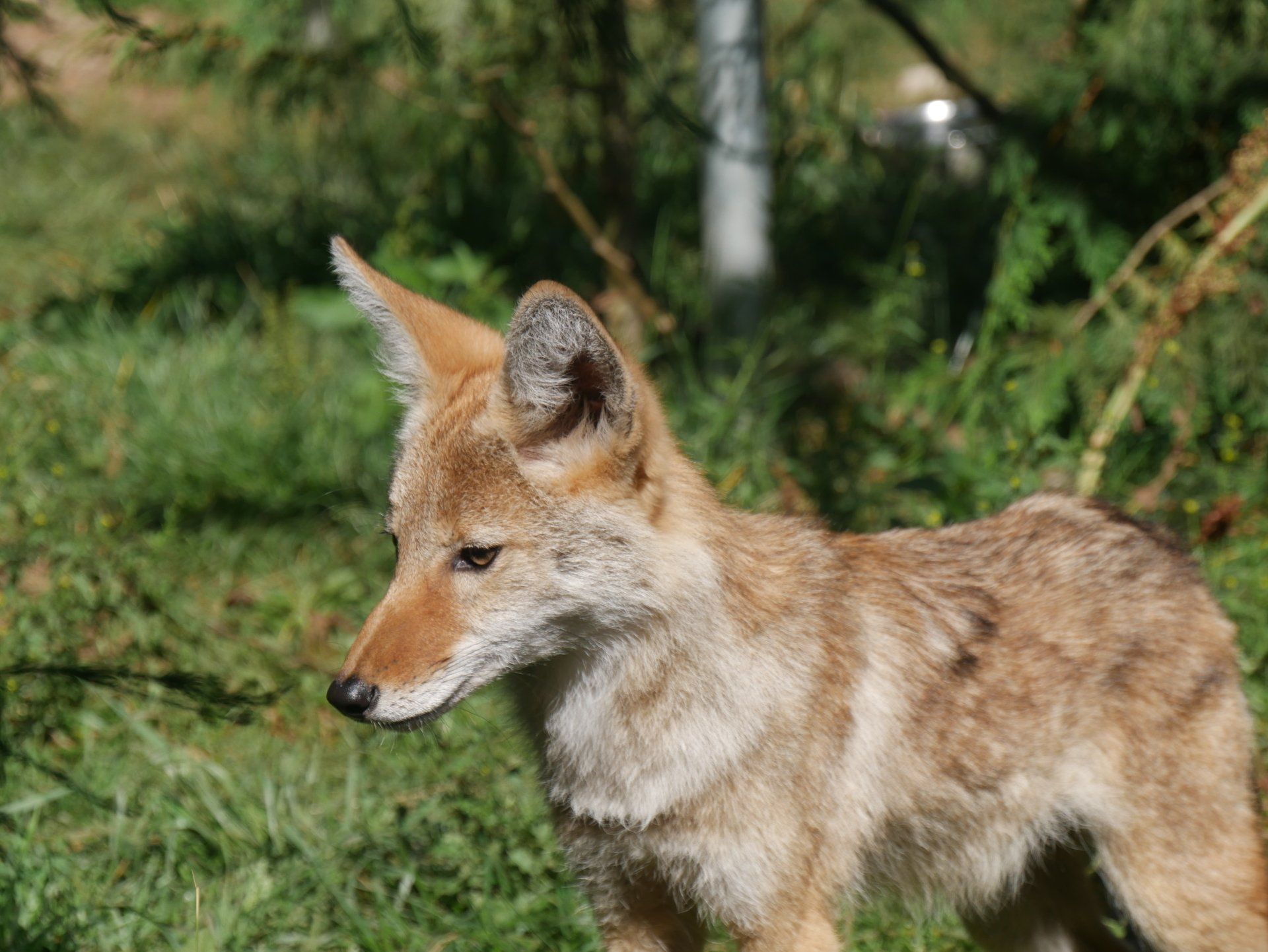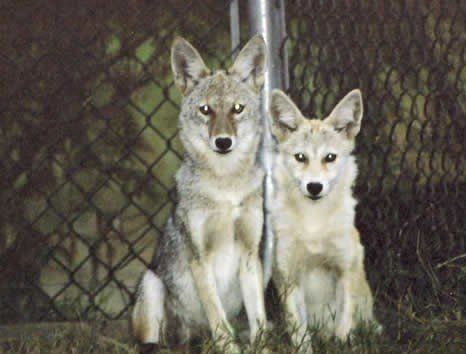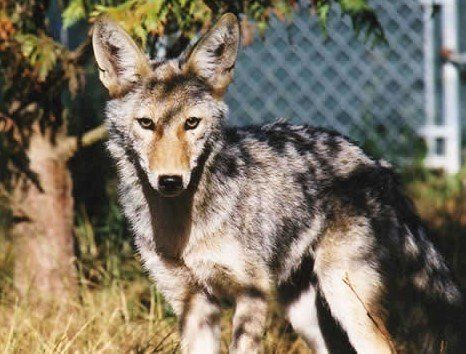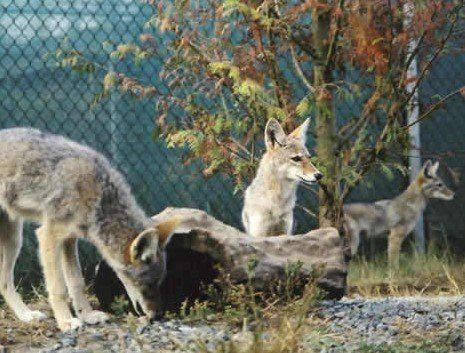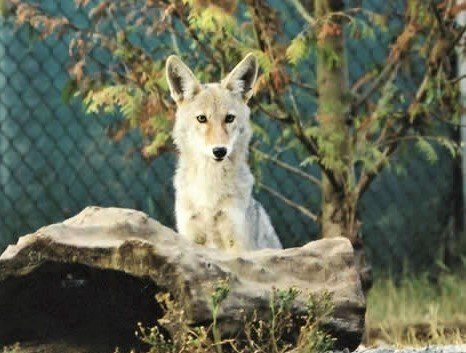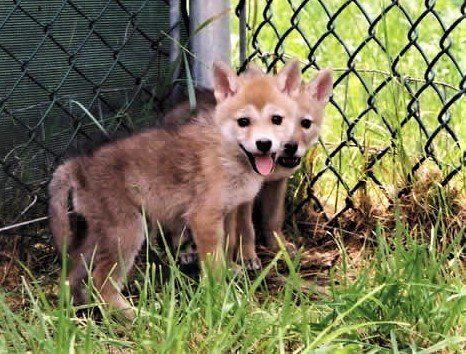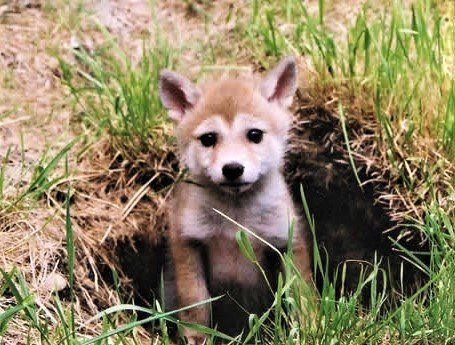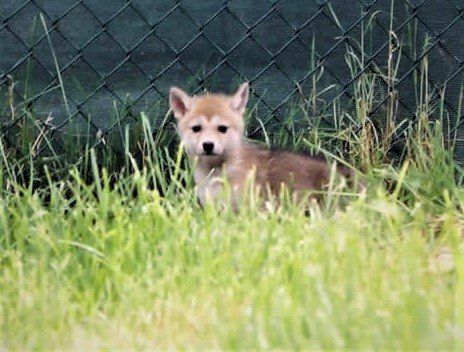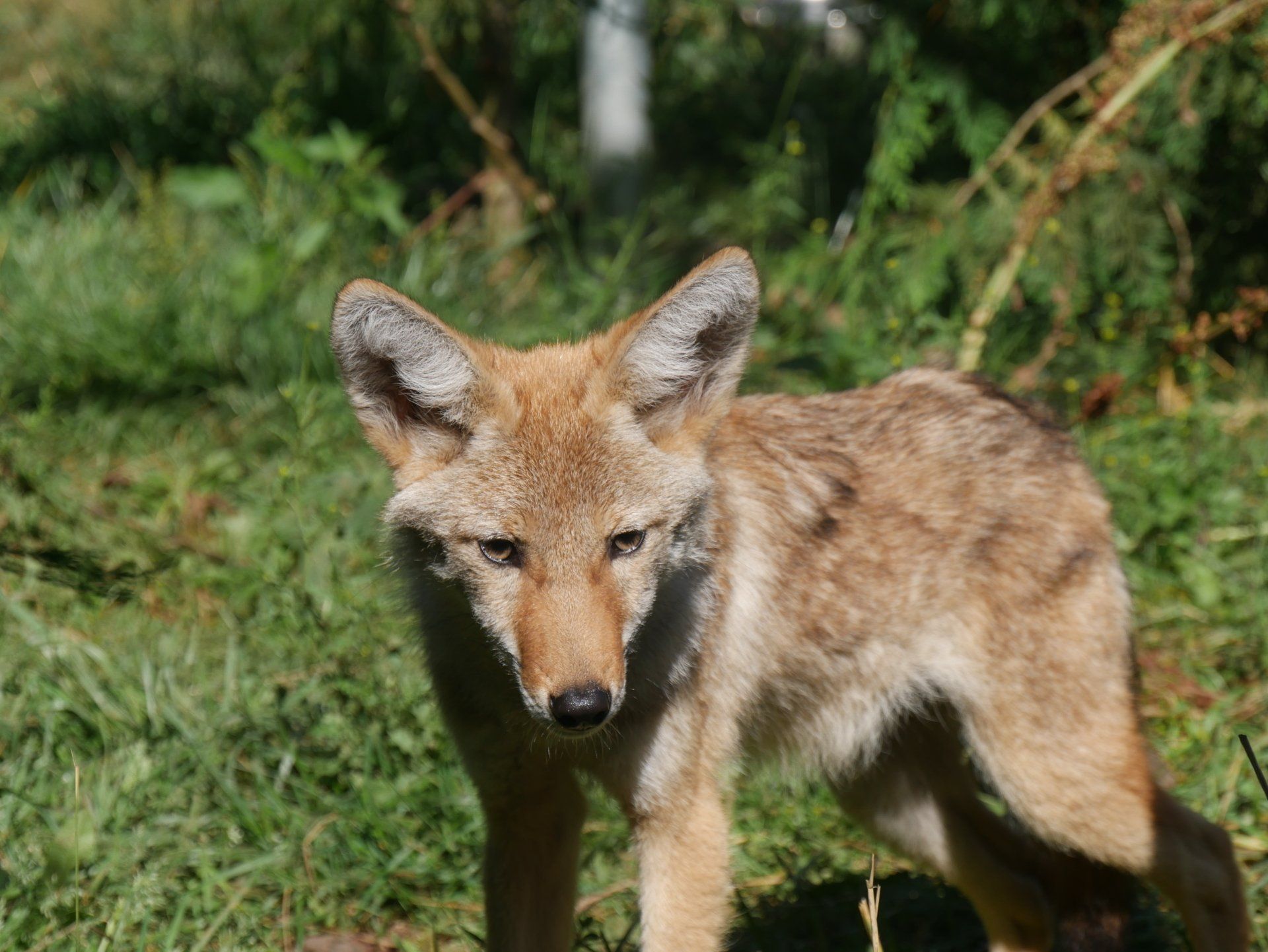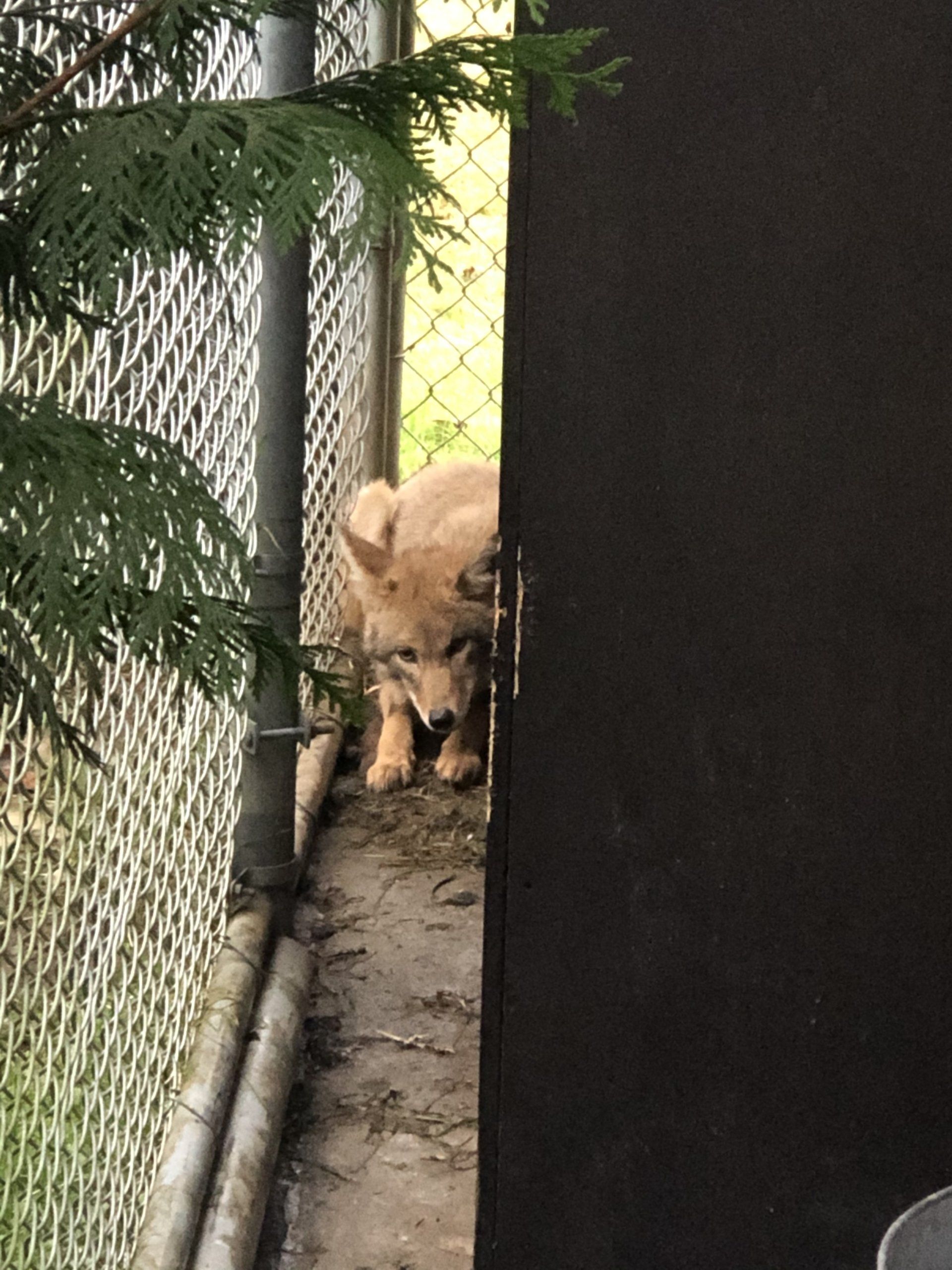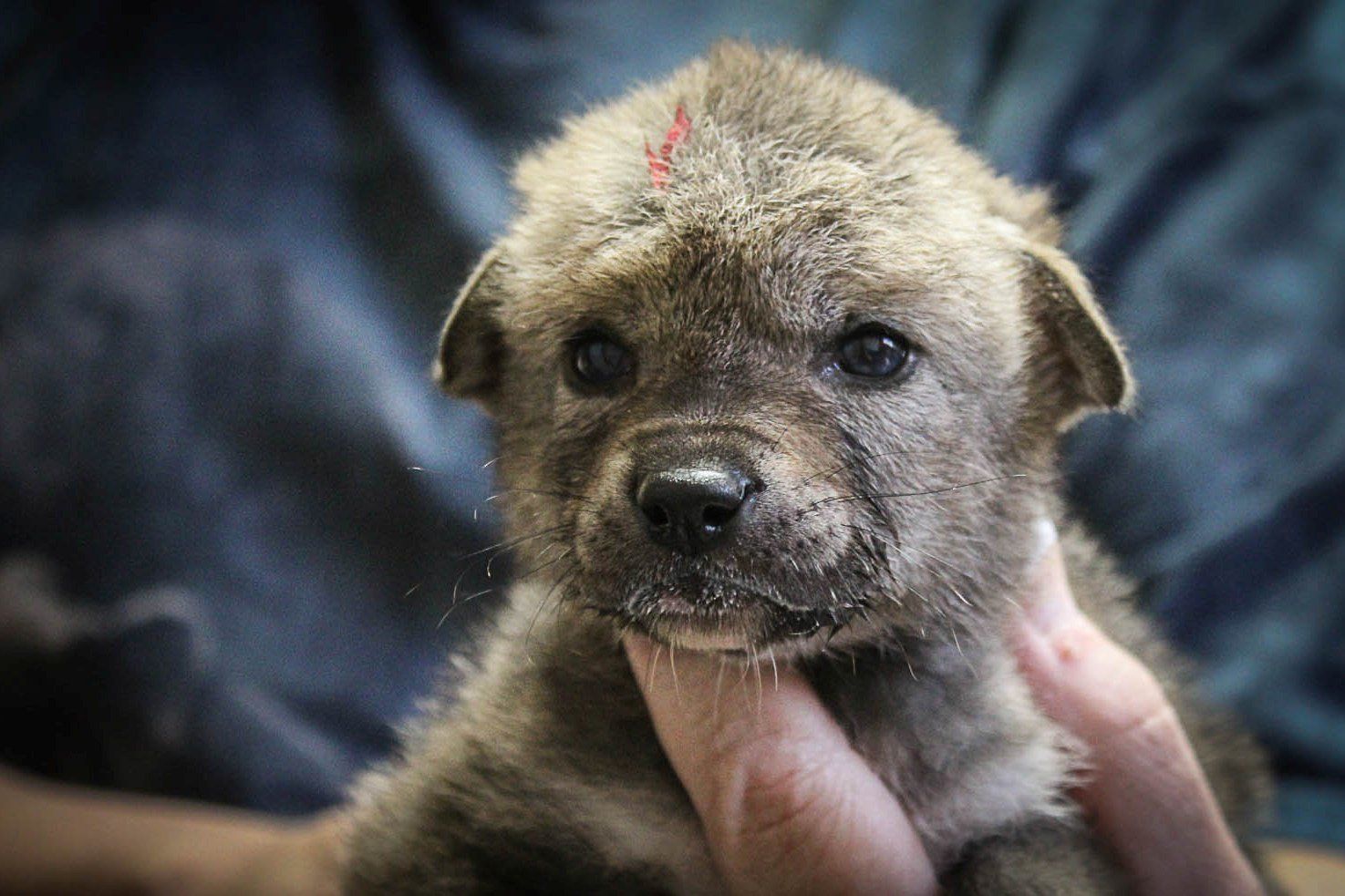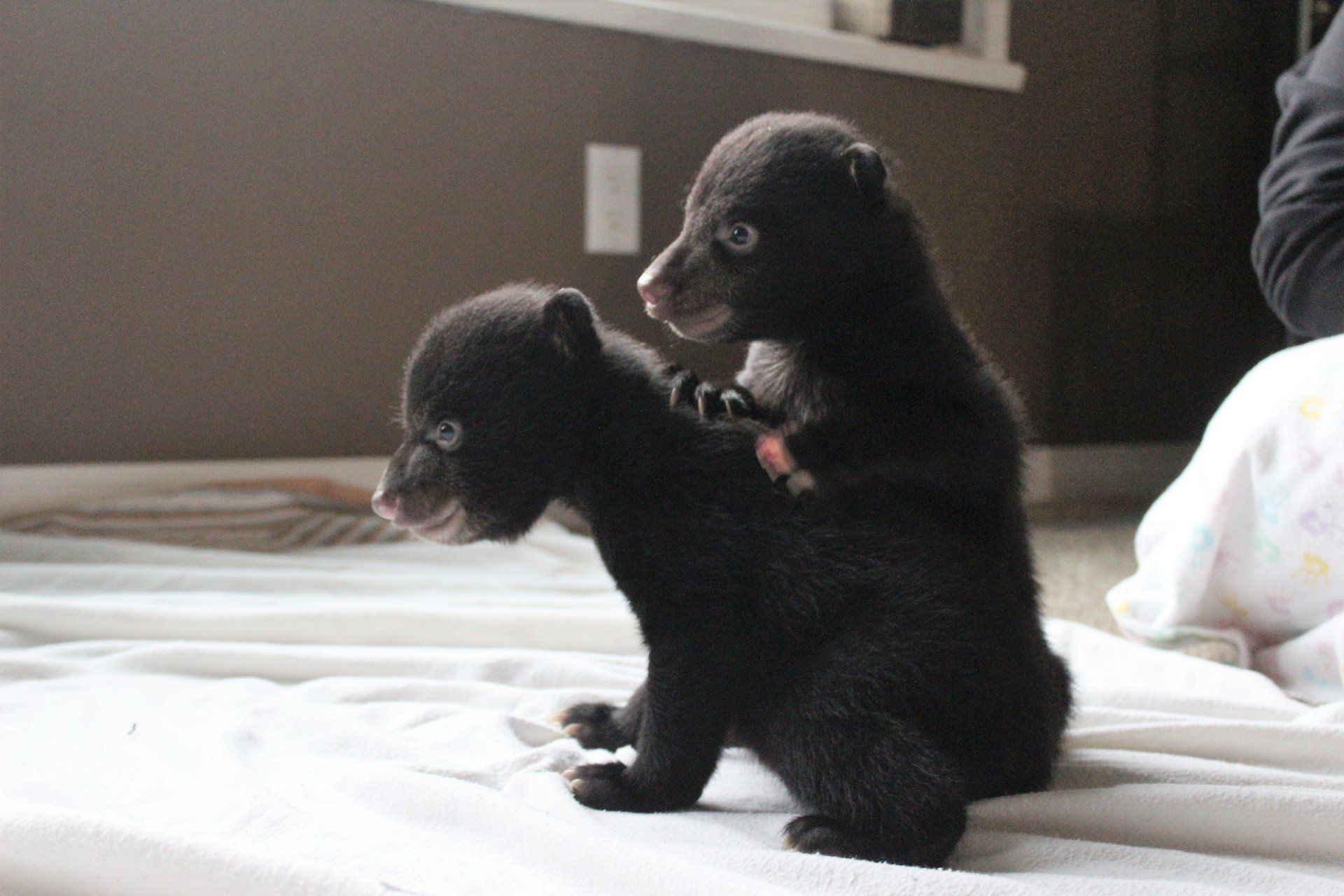Coyotes
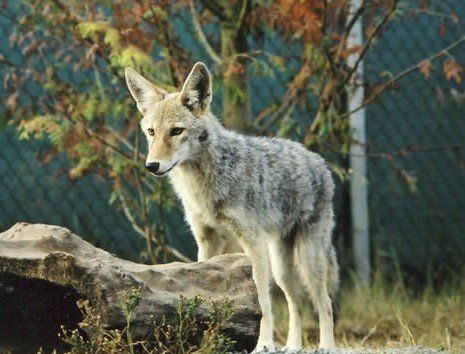
Description
- Coyotes vary between 10 and 20 kg (20 to 25 pounds) in weight.
- Fur is brownish-grey with some white or yellow areas (legs, paws, throat, belly and ears); lightens in winter and darkens in summer; provides excellent protection from cold.
- Long, soft fur darkens on hind of back, becoming wavy; ends in a bushy, fox-like, black-tipped tail, carried low.
- Neck is well-furred and looks oversized for the body.
- Smaller and slimmer than a wolf; erect, wide, pointed ears, a slim muzzle and a black nose.
- Long tongue often hangs down between the teeth, regulating the body temperature through panting.
- Yellow, slightly slanted eyes and black, round pupils; well-developed hearing, vision and smell.
- Canine teeth, remarkably long.
- Paws are elongated with 4 toes and non-retractable claws.
- Coyotes are extremely intelligent and playful predators.
- Coyotes appear to be monogamous, and couples may remain together for life.
- Mating occurs in February and March, and gestation takes 60 to 63 days.
- Pups are born with fine brown fur, in litters of 3 to 7. Their eyes open up 8 or 9 days after birth, and weaning occurs by 2 months.
- While still in the den, the male will prowl around and bring food to the entrance for the young.
- The mother provides regurgitated food for the pups for up to a year. Shortly thereafter, the young coyotes are ready for breeding.
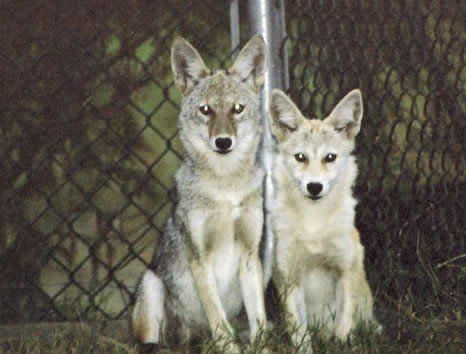
Habitat
Coyotes prefer open or semi-wooded habitats, such as aspen parkland or short/mixed-grass prairies.
Are very adaptive and are also found in dense forests, deserts, brush, and mountainous areas.
Unique Facts
Coyotes will hunt deer fawns or domestic sheep, calves, and poultry.
Active any time of the day or night and travel wide areas for food. Usually, hunt alone or in pairs but will gather in groups (packs/clans) and hunt large animals.
Able to change course in mid-step, possessing agility that is incredible and unique. Hard runners, reaching speeds of 40 km up to 64 km.
Swim well and are swift, tough, and wily.
Make dens or bed down in thickets, at the base of hollow trees, in holes between rocks, or enlarged old marmot/badger burrows. Coyotes mostly prefer to burrow in the soil.
Diet
Omnivorous but primarily flesh-eaters, coyotes prefer rabbits, hares, and rodents. They will eat fruit, insects, plants, grass, vegetables, pets, or carcasses left behind by the wolf.
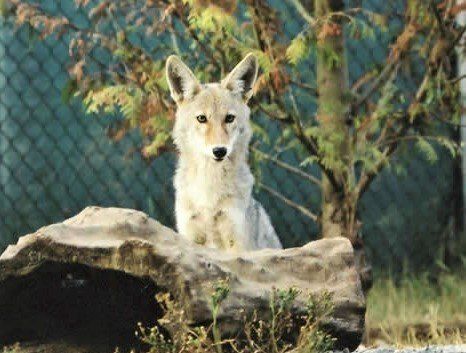
Challenges
Coyotes are scavengers and will get into garbage, composts, pet food, gardens and fruit trees.
Also a threat to livestock and, sometimes, pets.
Predators
People (purposely) using guns, poison, and traps. People (by accident) involving vehicles or farm machinery, wolves, black bears; mountain lions, eagles, lynx, parasites, and disease.
Two major weaknesses of coyotes are their deep sleeping and their uncontrollable desire to look back while running.
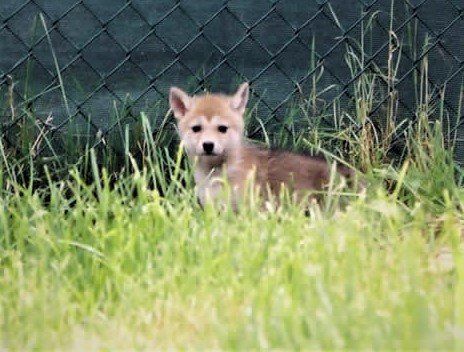
Solutions
To limit unwanted visits from Coyotes:
Eliminate access to the food supply.
Keep pet foods inside, securing garbage and composts, penning and confining livestock and pets at night, and pick up fruit fallen from trees each day.
A permanent or temporary fence can also be installed. Guard dogs or repellents, such as human scent and activity.
Ammonia and pepper provide strong-smelling deterrents.
Keep a clean yard, feed pets inside and keep garbage covered tightly.
Find Out More
Give Today
Sponsor and orpaned animal or project
About Us
Find out who we are
Take Action
Find out how you can help

